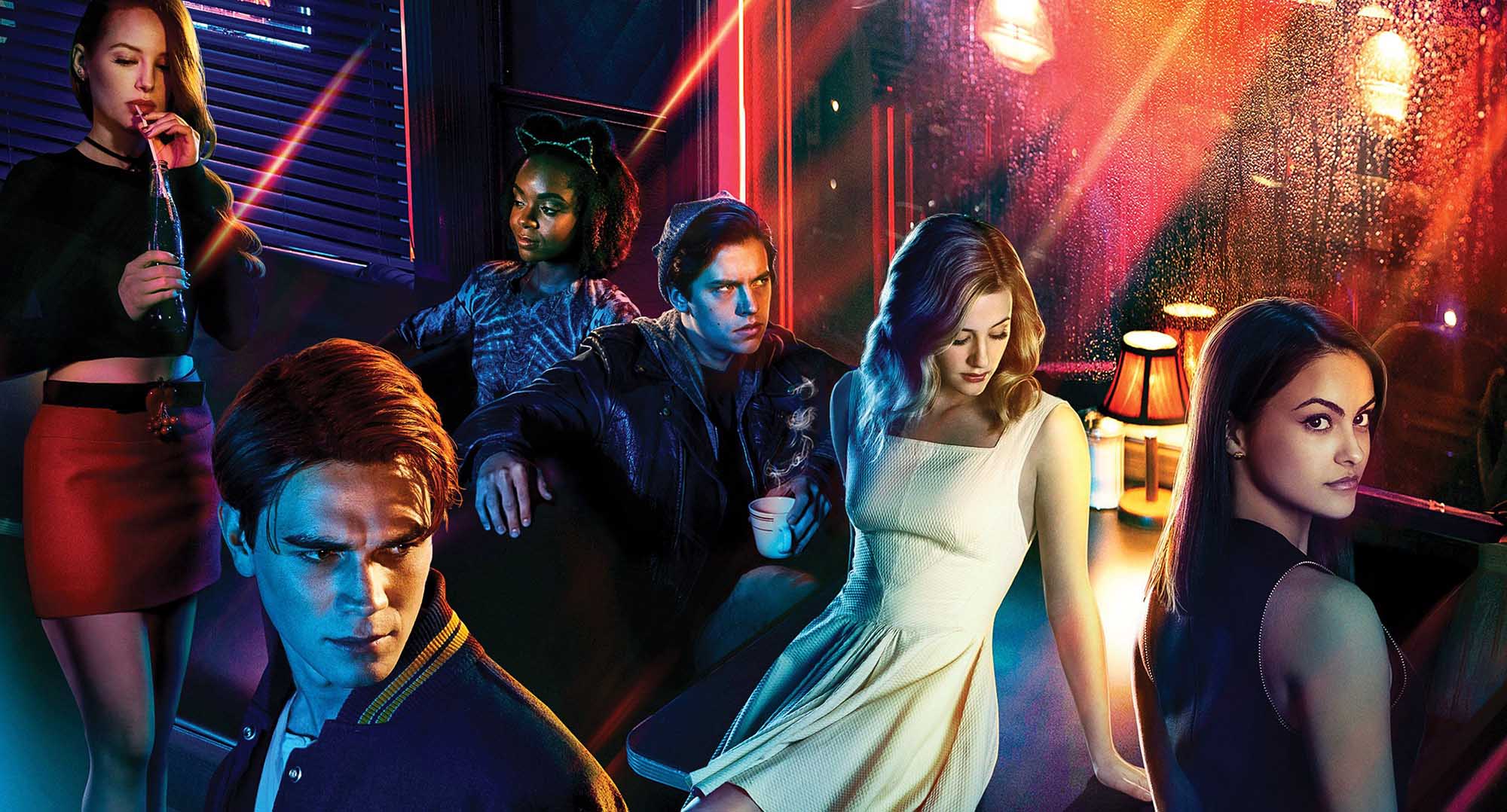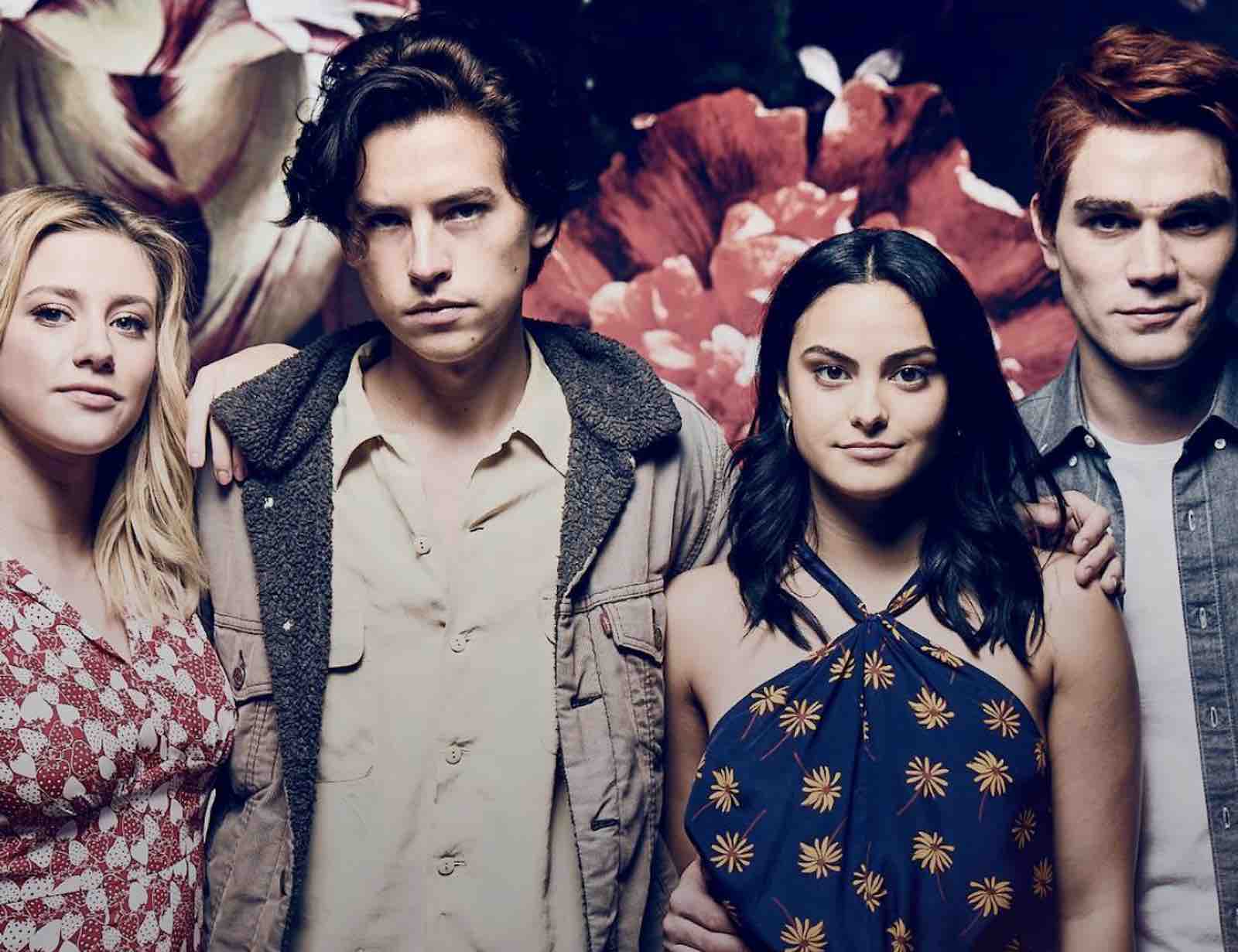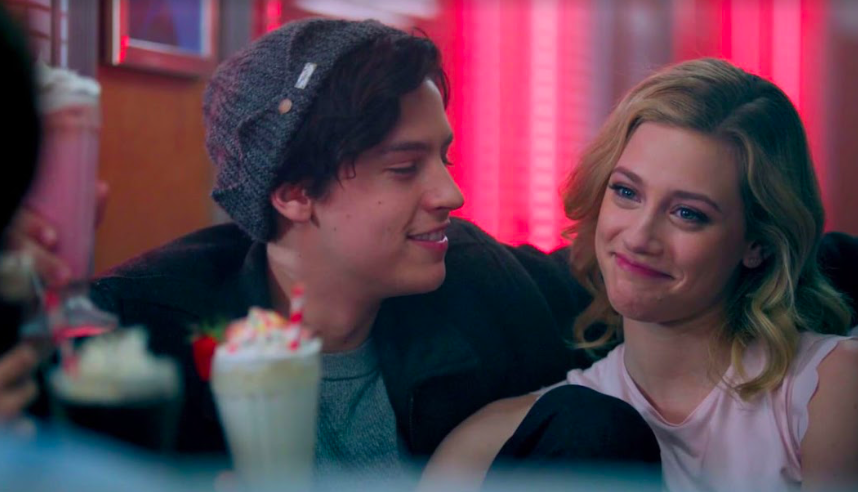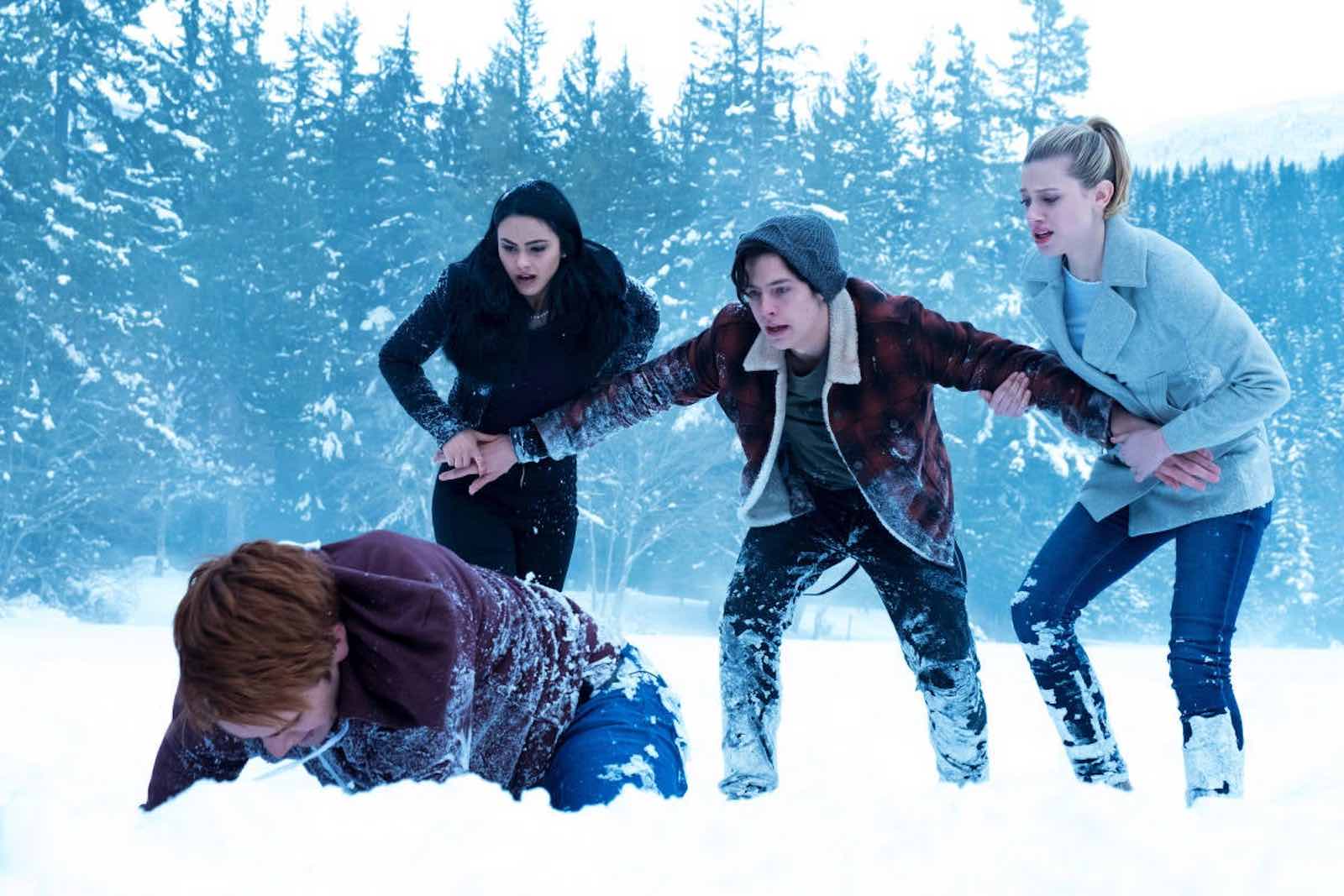
Long live ‘Riverdale’: TV’s most wicked misfit
As our beloved Riverdale wrapped for another season last week with another absolutely bananas ending – why did they need to burn Jughead’s hat? – it’s high time to praise one of the most straightup insane TV shows on screen and pray that The CW ratings juggernaut continues to wear its crown for a long time to come. (Jughead sure can’t wear his hat anytime soon.)
In 2015, MTV debuted a TV show nobody particularly wanted by the name of Scream: The TV Series. However, just a few episodes in and fans & critics slowly climbed on board with the show’s premise and sharp-witted proclivity to do with teen TV tropes what Scream did for slasher movie tropes.
In Scream: The TV Series (for the first terrific season at least), narrative fixtures like the love triangle, the jock bully, the hot new kid, and the awkward beauty pageant were cleverly subverted with a bloodthirsty fiendish eye. Along with shows like Scream Queens (2015 – 2016) and Pretty Little Liars (2010 – 2017), it established a new era of genre-mashing teen shows. And like a mutated psycho killer rising from the radioactive swamp of pop culture, Riverdale is the show that has risen from the corpses of all of them.

Blood and subversion: Skewering tropes of the past
Since 2017, Roberto Aguirre-Sacasa’s dark edgy take on the Archie comics canon has been the leading teen show on TV. It’s no surprise to subsequently hear The CW show has officially been renewed for a fourth season.
Though it boasts all the hallmarks of any other popular teen show which came before it – most notably an extremely attractive cast including K.J. Apa (The Cul De Sac), Cole Sprouse (Friends), Camila Mendes (The New Romantic), and Lili Reinhart (The Kings of Summer) – it does so while subverting many of those hallmarks with a shrewd, progressive, and deliciously macabre scrutiny.

This is not your mom & dad’s teen show, kids – even if it does star teen heartthrobs of times past like Luke Perry (The Fifth Element), Skeet Ulrich (The Craft), and Molly Ringwald (Pretty in Pink).
What Riverdale has done especially well across its two seasons is deconstruct a variety of different genre tropes while also paying loving tribute to them. At the beginning of the first season, Vox worried Riverdale had “burned through its teen soap tropes” at such “record speed” it was rushing through narratives other teen shows took multiple seasons to draw out.
Where could the show go next? Except, as fans have witnessed, Riverdale has inexplicably become one of the most savvy, neo-noir, horror, Lynchian teen shows on television and it has done so while pushing genre television forward.

The horrors of being a teenager
Having introduced The Black Hood at the start of season two, Riverdale has featured a slew of horror references to everything from David Fincher’s Zodiac to Krzysztof Komeda’s iconic theme for Rosemary’s Baby. Not content with simply showing lashings of bloodshed and murder, this past season has also dropped references to The Godfather II (in exploring Archie’s newfound position as a legit mobster in training) and one obligatory visual reference to the Twin Peaks episode in which Bob slithers over a couch towards the camera.
As Aguirre-Sacasa once put it, “all roads to Riverdale lead back to Twin Peaks,” which helps to explain the show’s firm grip on noir narrative, horror, and Americana. Like good-girl Betty Cooper, the show is perfectly content to explore standard teen storylines over milkshakes, burgers, and fluttering eyelashes.

But like dark Betty in her black wig and lingerie, Riverdale isn’t afraid to pick away at the surface of Americana to spotlight a variety of horror, corruption, and obscurity eating away at the pleasantries of a small town. We even open and close every episode with a ghoulish summation of town events via a noir-esque voiceover from Jughead Jones (Sprouse), hinting there’s more to every story than meets the eye.
By obscuring what are considered regular teenage concerns (dating, pimples, and popularity) with more serious issues (murder, prostitution, and gang violence), Riverdale suggests the modern teenager may have a little more on their mind than simply finding a date for the dance.
Not that all teenagers are likely being blackmailed by a biker gang, working with the FBI to takedown their girlfriend’s mob father, or investigating a local serial killer. But the genre elements of the show at least reflect how monstrous and terrifying being a teenager can genuinely be.

Reflecting the real world (and existing beyond it)
Existing as a liminal show pitched somewhere between the real world and a genre universe playing by its own set of rules, it also makes sense Riverdale features more diversity and LGBTQI representation than your average teen or genre show would.
Speaking to CBR, Aguirre-Sacasa announced, “If we’re going to do a show in the real world, it has to reflect the real world. And the real world is not 100 percent white.” As a result, the main cast of the show features three women of color as Josie and the Pussycats (Ashleigh Murray, Asha Bromfield, and Hayley Law), a Latino family (Mendes, Mark Consuelos, and Marisol Nichols), and various peripheral characters portrayed by actors of color.
Though the series has been accused of not offering nearly enough representation to many of these characters, it’s still somewhat refreshing to see a teen series (particularly one with genre elements) delving beyond the usual casting pool of white stars.

Teen shows are rarely great at exploring LGBTQI characters beyond superficial stereotypes and the irksome after-school-special “coming out” episode, but Riverdale also proudly boasts several queer characters who openly embrace and enjoy their sexuality.
This season has seen bisexual characters like Toni Topaz (Vanessa Morgan) and Cheryl Blossom (Madelaine Petsch) make bold statements concerning their attraction to women. Meanwhile Kevin Keller (Casey Cott) was upgraded from being S1’s one-liner-ready sassy homosexual to a character raging against the “pale pink world of milkshakes and first kisses” by going cruising in the woods in a bid to end his loneliness.
You’d never see teen gay character Jack McPhee (Kerr Smith) doing that in Dawson’s Creek back in the late 90s, nor would it have been conceivable to see more than one main LGBTQI character on screen at the same time. Especially not enjoying and being proud of their sexuality as they do in Riverdale.

But this is a teen show in which Nancy Drew mysteries, serial killers, biker warfare, and mob mentalities are the order of the day. Where genre icons like Mädchen Amick (Twin Peaks) and Tony Todd (Candyman) are cast in knowing self-aware roles and where being a teenager is as nightmarish as losing yourself within The Black Lodge, never to return.
Instead of cannibalizing it, Riverdale dissects the teen drama while slicing & dicing plenty of other genre tropes too. As S2 unfurls its final set of mysteries, we can’t wait to see what tropes and genres the show hacks away at next.







